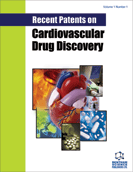Abstract
The most common symptom of lower extremity peripheral arterial disease (PAD) is intermittent claudication. The severity of PAD is closely related with the risk of myocardial infarction, ischaemic stroke, and death from vascular causes. Despite the higher prevalence of PAD, far less importance is given to its diagnosis and management. Patients with peripheral arterial disease should be offered secondary prevention strategies including aggressive risk factor modification and anti-platelet drug therapy. Cilostazol, a reversible, selective inhibitor of PDE III with antiplatelet, antithrombotic and vasodilatory effects, was approved by the FDA in 1999 for the treatment of Intermittent Claudication. It is believed that the collective pharmacology effect of cilostazol actually improves blood flow to the lower extremities. The efficacy of cilistazol has been demonstrated in eight Phase three clinical trials. Cilostazol is the first drug to consistently demonstrate clinical efficacy in many double-blind randomised control trials. It is indicated for the improvement of the maximal and pain-free walking distances in patients with IC, who do not have rest pain and who do not have evidence of peripheral tissue necrosis. In this review we highlight the role of Cilostazol in the management of peripheral arterial disease. The combined effect of aspirin with Cilostazol was recently patented.
Keywords: Peripheral vascular disease, claudication, medical management
 5
5


